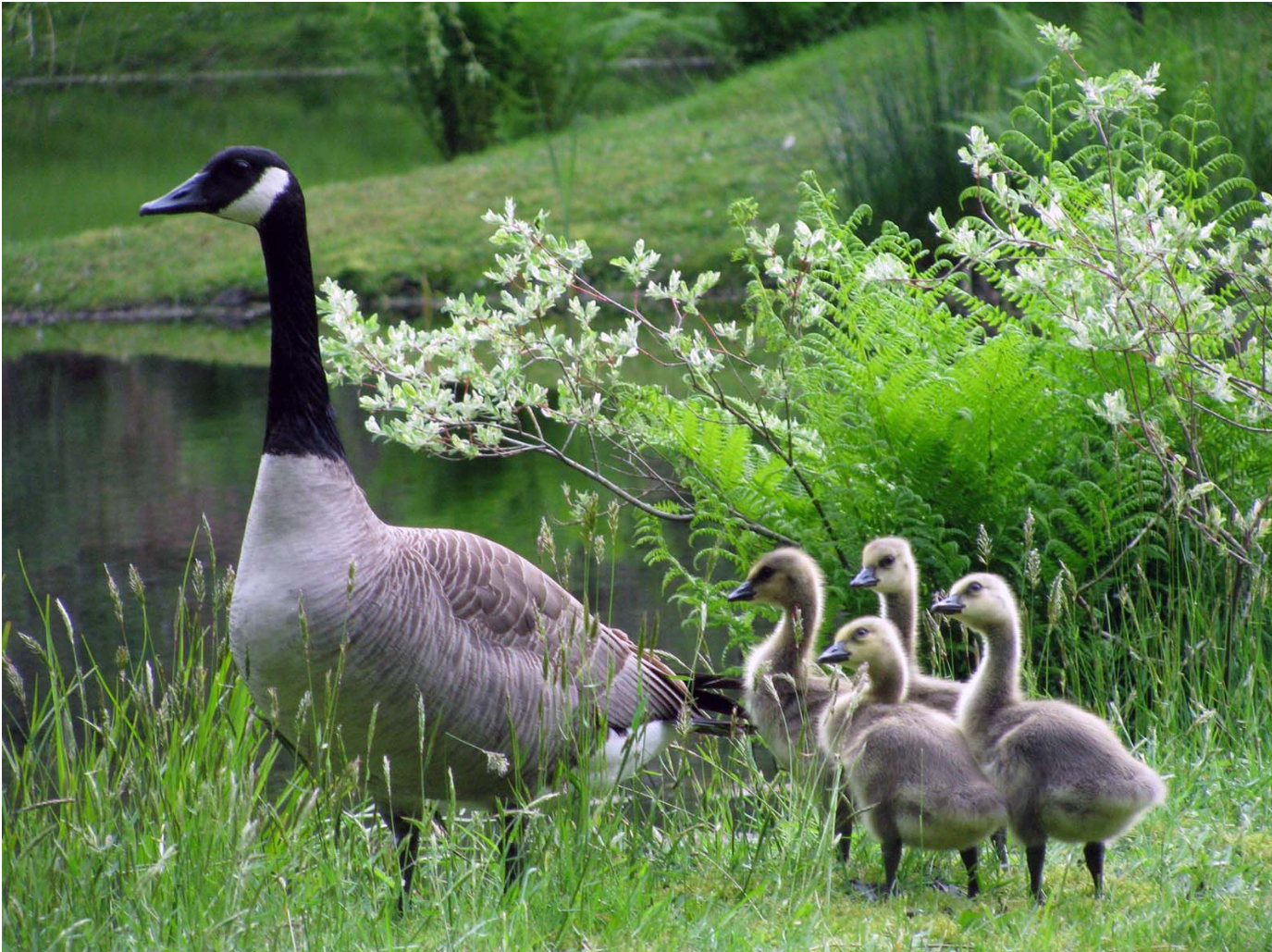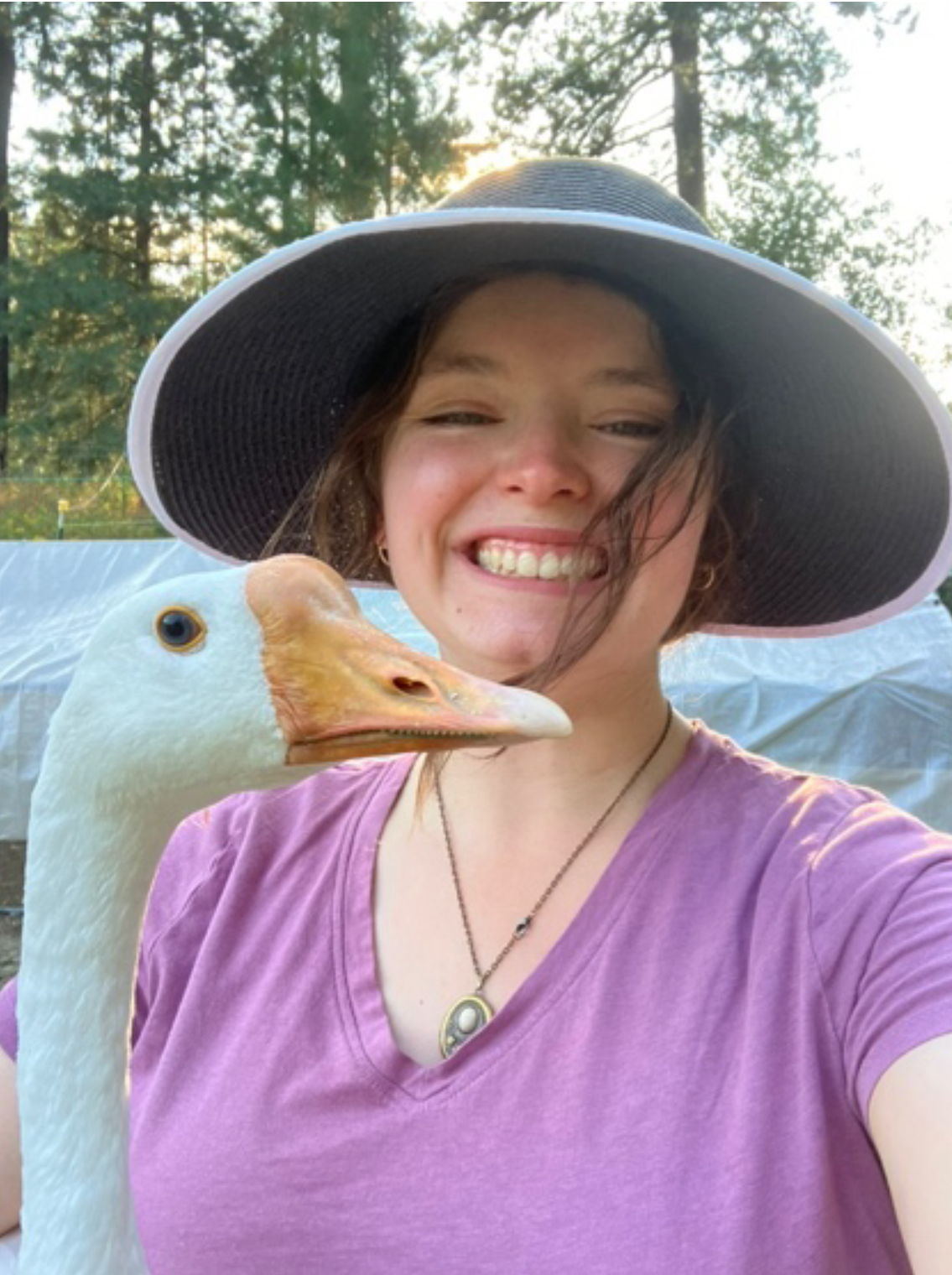Ryan Gosling deserves to live. I’m not talking about the famous actor, though I wish him much longevity; rather, I’m speaking of Ryan, the baby Canada goose found (and named) by my brother last spring. He had been dragged under our deck by a predator and was nearly dead, suffocated by mud. He was a sweet little thing. My brother cleaned him up and helped him get strong, but we knew that—as a wild bird—he couldn’t stay with us. Geese are everywhere in our hometown, but Ryan was special.
The abundant Canada goose seems to be Public Enemy #1, due to their ever-growing population, defensive behavior, and potential risk to public health (“What to Do About Canada Geese”). For years, egg addling and forms of culling have been used as methods of population control, with non-violent scare tactics also applied, though to less effect.

Canada goose culling involves rounding up a large number of adult geese during molting season when they cannot fly, then taking them off-site and euthanizing them (“Humane Goose-Control Solutions” 3). Egg addling for population control consists of spraying all the eggs in a nest down with corn oil, which suffocates the embryo and kills the gosling before it can hatch. Egg addling is acknowledged by the Humane Society of the United States and by PETA as a humane control method, whereas the culling of adult geese is considered inhumane (“What to Do About Canada Geese”; “Humane Goose-Control Methods”). However, there are some, myself included, who believe egg addling to be equally inhumane. Ornithologist Donald Heintzelman, of the group Friends of Animals, argues that the practice is cruel due to the stress placed on “frantic parents” and the fact that, if done improperly, egg addling “can leave an embryo alive but deformed” (Position Statement).
Thus we see that, despite the efficiency of these practices, they are not an ideal long-term option; moreover, public opinion is against them. Pictured below are protestors from a New Jersey housing complex whose administrator signed a contract for annual culling. One resident, Barbara Spector, pointed out that culling is not cost effective, at “a total of $263 per goose.” David Sauder, another protestor and president of the Animal Rights Activists of New Jersey, raised the call to turn to landscape modification instead, but it fell on deaf ears (Mazziotti).

A similar culling recently occurred in Sandpoint, Idaho, near my hometown. When I heard of it, all I could think of was little Ryan. If he had lived at the park, would they have killed him, too? It’s time that humans take the high road and choose a long-lasting, non-violent solution to Canada goose overpopulation. But with such a controversy stirred by these fowl, how can communities peacefully manage them?
There is a solution—a middle ground—and David Sauder brought it up: habitat modification (Mazziotti). This option spans the distance between conservation and eradication, inviting us to rethink the way we create public spaces. Honestly, the overabundance of Canada geese at our parks, ponds, and golf courses is our own fault. The landscape design that humans find pleasant is ideal to geese as well. In these locations, they have open access to water, plenty of food, and secure areas to nest and raise their young (Groom). Plenty of literature exists describing potential changes in the landscaping of public areas that would discourage goose settlements, such as installing “sight-limiting components,” increasing native plant life, and “reducing food palatability” (Heintzelman 9). Although this process would require labor, time, and money, the end result will be more acceptable to all those involved—including the geese. We should design public spaces with the consideration of making them inhospitable to geese, allowing them to live, and us to enjoy public amenities.
Canada geese, nuisance though they may be, are simply animals looking for a secure space to mate and raise their young. To those who manage and design landscapes, to citizens who care, I ask that we consider the value of wildlife and the beauty they add to our spaces. We can maintain the comfort and integrity of leisure spaces in urban areas without inviting the geese to join in by altering our methods of design. Peace is still an option.
Works Cited
Campbell, Emma [@CampbellxEmma]. “Peace Was Never an Option.” Twitter. 28 Sept. 2019. https://x.com/CampbellxEmma/status/1178061498301767682 (Figure 1.)
Felling, Kyle. “Discover Nature: Canada Goose Nesting.” KBIA, 24 March 2020, https://www.kbia.org/arts-and-culture/2020-03-24/discover-nature-canada-goose-nesting
Groom, Quentin J., et al. “Site Selection by Geese in a Suburban Landscape.” PeerJ, 22 Sept. 2020. 10.7717/peerj.9846
Heintzelman, Donald S. Canada Goose Habitat Modification Manual. Friends of Animals, 2005.
“Humane Goose-Control Solutions.” PETA, June 2021.
Mazziotti III, Anthony J. “Gassing Geese Stirs Controversy.” The Sun Newspapers, 16 July 2019, https://thesunpapers.com/2019/07/16/condominium-complex-giving-residents-goose-bumps/ (Figure 2.)
“What to Do About Canada Geese.” The Humane Society of the United States, 2024, https://www.humanesociety.org/resources/what-do-about-canada-geese#away

